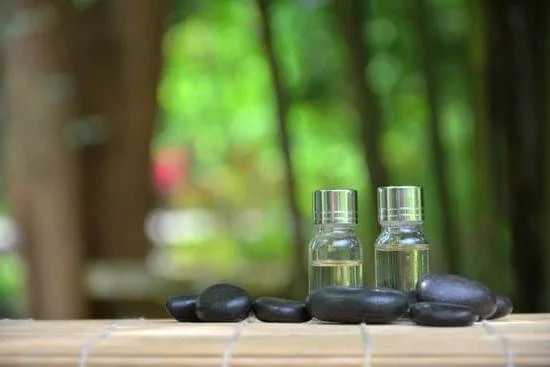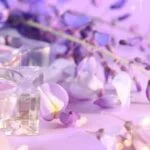Aromatherapy is a practice that has been gaining popularity in recent years as people seek natural and holistic approaches to health and wellness. But what exactly is aromatherapy? In this article, we will delve into the definition of aromatherapy, exploring its origins, techniques, benefits, and more.
Aromatherapy can be defined as the therapeutic use of aromatic plant extracts, known as essential oils, to promote physical, mental, and emotional well-being. These essential oils are derived from various parts of plants such as flowers, leaves, bark, and roots through processes like steam distillation or cold-pressing. The scents emitted by these oils are believed to have a profound effect on our senses and can positively impact our overall health.
The significance of aromatherapy lies in its ability to harness the power of nature’s healing properties. It has been used for centuries across different cultures around the world for its therapeutic benefits.
Aromatherapy not only promotes relaxation and stress relief but also aids in relieving pain, improving sleep quality, boosting mood, enhancing cognitive function, and supporting the immune system. By understanding the concept of aromatherapy and how it works, we can unlock its potential as a natural healing modality that complements traditional medicine.
History of Aromatherapy
The history of aromatherapy is a fascinating journey that takes us back to ancient civilizations and their use of aromatic plants for healing purposes. Aromatherapy as we know it today has its roots in the practices of ancient Egyptians, Greeks, and Romans. These civilizations recognized the therapeutic qualities of essential oils and utilized them in various ways.
- The Egyptians were known to use aromatic plant extracts for embalming and spiritual rituals. They believed that certain scents had the power to communicate with deities and influence their lives.
- In ancient Greece, Hippocrates, often referred to as the father of modern medicine, used aromatic botanicals for their medicinal properties. He believed that they had the ability to restore balance within the body and promote overall well-being.
- The Romans were particularly fond of using fragrances for their luxurious baths. They also used essential oils in massages, believing that this practice could improve both physical and mental health.
As time went on, the knowledge and practices surrounding aromatherapy spread throughout different cultures and regions. It became an integral part of traditional medicine systems such as Ayurveda in India and Traditional Chinese Medicine (TCM).
During the Renaissance period, interest in herbal medicine revived in Europe, leading to further exploration of aromatherapy. The distillation process was invented during this time, which enabled the extraction of essential oils more efficiently. This discovery opened up new avenues for using essential oils in various applications.
In recent years, aromatherapy has gained popularity globally as people seek natural alternatives for health and well-being. Its rich history highlights its efficacy and enduring appeal across different cultures throughout time.
Defining Aromatherapy
Aromatherapy is a holistic healing practice that utilizes the power of essential oils to enhance physical, mental, and emotional well-being. The word “aromatherapy” itself suggests the combination of aroma and therapy, emphasizing the central role of scent in this practice. However, aromatherapy is not simply about enjoying pleasant smells; it involves a deep understanding of how various essential oils interact with the body and mind to promote healing and relaxation.
Definition of Aromatherapy
At its core, aromatherapy can be defined as the therapeutic use of aromatic plant extracts, known as essential oils, to balance and support overall health. These concentrated essences are derived from different parts of plants such as flowers, leaves, bark, and even roots. Through various methods of application, including inhalation and topical use, these essential oils can have profound effects on our physical and emotional well-being.
How Aromatherapy Is Practiced
Aromatherapy is practiced in many different ways depending on the desired outcome and individual preferences. One common method is through the use of diffusers or vaporizers. These devices disperse a fine mist of essential oil molecules into the air, allowing them to be inhaled for both their therapeutic benefits and pleasant fragrance.
Another popular approach is massage with aromatherapeutic oils. In this technique, diluted essential oils are applied directly to the skin during a massage session. The combined effects of touch therapy and inhalation create a powerful sensory experience that promotes relaxation and rejuvenation.
In addition to diffusing and massage, individuals may also choose to incorporate aromatherapy into their daily routine through inhalation techniques such as steam inhalation or direct inhalation by inhaling essential oils from a tissue or inhaler stick.
It’s important to note that while aromatherapy can serve as an effective complementary therapy for many conditions, it should not be considered a substitute for professional medical advice or treatment. If you have specific health concerns, it is always recommended to consult with a healthcare professional before integrating aromatherapy into your wellness routine.
Principles of Aromatherapy
Aromatherapy is rooted in several fundamental principles and techniques that form the basis of its practice. These principles guide aromatherapists in their use of essential oils to promote physical, mental, and emotional well-being.
One key principle of aromatherapy is the belief in the power of scent to affect our mood and emotions. Certain fragrances have been shown to have a direct impact on the limbic system, which is responsible for regulating emotions and memory. By inhaling and experiencing these scents, we can stimulate specific emotional responses, such as relaxation, upliftment, or focus.
Another principle of aromatherapy is the understanding that each essential oil has unique therapeutic properties. Different oils have distinct chemical compositions that give them specific healing benefits. For example, lavender oil is known for its calming and soothing properties, while peppermint oil is often used for its energizing and invigorating effects. Aromatherapists carefully select and blend oils based on their desired therapeutic outcomes.
Techniques used in aromatherapy include inhalation, topical application, and diffusion. Inhalation involves either breathing in steam infused with essential oils or using a diffuser to disperse the aroma into the air. This method allows for quick absorption of the oils into the bloodstream through inhalation.
Topical application involves diluting essential oils with carrier oils before applying them directly to the skin through massage or other methods. The skin absorbs these oils into the bloodstream, allowing for localized or systemic effects depending on where they are applied.
To ensure safe usage of essential oils, it is crucial to follow proper guidelines and precautions. Essential oils are highly concentrated substances and should never be ingested without professional guidance. It is also important to properly dilute essential oils before applying topically to avoid skin irritation or sensitization.
Overall, understanding these principles and techniques allows individuals to effectively incorporate aromatherapy into their wellness routines. By harnessing the power of fragrance and essential oils, aromatherapy can provide a unique and holistic approach to enhancing overall health and well-being.
| Principles | Techniques |
|---|---|
| Aromatherapy is based on the belief in the power of scent to affect emotions and mood. | Inhalation: breathing in steam or using a diffuser to disperse essential oils into the air. |
| Each essential oil has unique therapeutic properties that are carefully selected and blended. | Topical Application: diluting essential oils with carrier oils before applying them to the skin through massage or other methods. |
Benefits of Aromatherapy
Aromatherapy has been used for centuries as a natural healing practice, and it is known to provide various physical, mental, and emotional health benefits. By harnessing the power of essential oils, aromatherapy offers a holistic approach to improve overall well-being. Here are some of the key benefits associated with aromatherapy:
- Physical Benefits: Aromatherapy can help alleviate physical ailments and enhance the body’s natural healing process. Certain essential oils have properties that can reduce inflammation, relieve pain, boost circulation, and improve digestion. For example, lavender oil is commonly used to soothe headaches and migraines, while peppermint oil can aid in relieving muscle pain and improving digestion.
- Mental Benefits: Aromatherapy is known for its positive effects on mental health. The inhalation of essential oils can stimulate the brain and promote relaxation, uplift mood, reduce stress and anxiety levels, and even improve sleep quality. Essential oils such as bergamot or chamomile can be particularly helpful in reducing stress and promoting calmness.
- Emotional Benefits: Aromatherapy has a profound impact on emotions as it directly affects the limbic system in the brain responsible for emotions and memories. Essential oils like rose or ylang-ylang are known for their mood-enhancing properties and can help uplift spirits, boost confidence, reduce feelings of sadness or grief, and promote overall emotional well-being.
To experience these benefits of aromatherapy effectively:
- Diffusing essential oils using an aromatherapy diffuser is a popular method that allows you to inhale the aromatic molecules.
- Massage therapy using diluted essential oils can deliver both physical and mental benefits.
- Inhalation techniques like steam inhalation or using personal inhalers allow quick absorption of essential oil compounds into your respiratory system.
It’s important to note that proper usage and safety precautions must be followed when practicing aromatherapy to avoid adverse reactions or sensitivities. It is recommended to consult a trained aromatherapist or healthcare professional before incorporating aromatherapy into your wellness routine, especially if you have any underlying health conditions or are pregnant.
Essential Oils in Aromatherapy
Key Essential Oils in Aromatherapy
Aromatherapy utilizes a wide range of essential oils, each with their distinct therapeutic properties and benefits. These oils are extracted from various parts of plants, including the leaves, flowers, stems, and roots. Let’s explore some of the key essential oils commonly used in aromatherapy and their specific therapeutic properties:
- Lavender Oil: Known for its calming and soothing effects, lavender oil is one of the most popular essential oils in aromatherapy. It can help reduce anxiety, promote relaxation, and improve sleep quality. This versatile oil is also effective in relieving headaches and migraines when applied topically.
- Peppermint Oil: With its refreshing scent and cooling sensation, peppermint oil is commonly used to enhance alertness and mental clarity. It can improve focus and concentration while providing relief from mental exhaustion and fatigue. Peppermint oil is also beneficial for relieving muscle soreness and tension when used in massage blends.
- Eucalyptus Oil: Widely recognized for its respiratory benefits, eucalyptus oil is often used to alleviate symptoms of congestion, coughs, and colds. Its antibacterial properties make it an effective choice for clearing nasal passages and promoting easier breathing. Eucalyptus oil can be diffused or added to steam inhalations for maximum respiratory relief.
- Tea Tree Oil: Known for its antimicrobial properties, tea tree oil is frequently used in skincare remedies due to its ability to combat acne-causing bacteria. It has also been found to be effective against fungal infections such as athlete’s foot or nail fungus. Additionally, tea tree oil possesses immune-stimulating properties that help strengthen the body’s natural defense system.
Other Common Essential Oils
Apart from the aforementioned essential oils, there are many others frequently used in aromatherapy. Some of these include:
- Lemon Oil: Known for its uplifting and energizing properties, lemon oil is often used to improve mood and reduce stress.
- Chamomile Oil: With its gentle and soothing nature, chamomile oil is famous for promoting relaxation and relieving anxiety.
- Rosemary Oil: Rosemary oil is known for stimulating mental clarity, improving memory retention, and increasing focus.
It’s essential to note that the therapeutic properties of essential oils can vary depending on their quality, purity, and individual response. Therefore, it is advisable to consult a certified aromatherapist or conduct thorough research before using any essential oils for aromatherapy purposes.
Aromatherapy Techniques
Aromatherapy is a holistic healing practice that utilizes the therapeutic properties of essential oils to promote physical, mental, and emotional well-being. There are various techniques and applications of aromatherapy that allow individuals to experience its benefits in different ways. This section will introduce some of the most common methods used in aromatherapy, including diffusing, massage, and inhalation.
Diffusing is one of the most popular and convenient ways to enjoy the benefits of aromatherapy. It involves using a diffuser to disperse essential oils into the air as fine mist or vapor.
Diffusers come in different types, such as ultrasonic diffusers that use water to disperse the oils or nebulizing diffusers that release undiluted essential oil particles into the air. Diffusing essential oils not only helps create a pleasant scent in a room but also allows for easy inhalation of their therapeutic properties.
Massage is another widely practiced technique in aromatherapy. By combining the benefits of touch therapy with the healing properties of essential oils, aroma massage enhances relaxation and promotes overall well-being. During an aromatherapy massage session, diluted essential oils are applied directly to the skin through gentle massaging motions. The absorption of these oils into the body triggers a variety of physiological responses that can help alleviate stress, reduce muscle tension, improve blood circulation, and enhance mood.
Inhalation is a simple yet highly effective method in aromatherapy. Inhaling essential oils directly or indirectly stimulates the olfactory system (sense of smell) which has a direct connection to our brain’s limbic system-responsible for emotions and memory-as well as our respiratory system.
Individuals can inhale essential oils by adding them to a hot bath or shower, using steam inhalation by placing a few drops in hot water, or by using personal inhalers or nasal sprays. Inhalation of essential oils can provide respiratory relief, alleviate congestion, uplift mood and mental clarity, and help with relaxation.
In summary, there are several techniques and applications of aromatherapy that allow individuals to experience its benefits in various ways. Diffusing essential oils into the air, enjoying an aromatherapy massage, or inhaling the therapeutic properties of essential oils are all effective methods to harness the healing power of aromatherapy.
It is important to note that different individuals may respond differently to each technique and it is recommended to seek guidance from a qualified aromatherapist for personalized advice on which method is best suited for individual needs.
| Aromatherapy Technique | Description |
|---|---|
| Diffusing | Dispersing essential oils into the air as fine mist or vapor using a diffuser. |
| Massage | Applying diluted essential oils directly to the skin through gentle massaging motions. |
| Inhalation | Inhaling essential oils directly or indirectly through various methods such as steam inhalation or personal inhalers. |
Safety and Precautions
When it comes to using essential oils in aromatherapy, safety should always be a top priority. While these oils can provide numerous health benefits, it is crucial to understand and follow certain safety measures and guidelines to ensure their proper usage.
Firstly, it is important to remember that essential oils are highly concentrated liquids extracted from plants. As such, they should never be ingested unless under the guidance of a trained professional. Ingesting essential oils can lead to serious health complications and should be avoided at all costs.
Additionally, when applying essential oils topically, it is crucial to dilute them with a carrier oil before use. Undiluted essential oils may cause skin irritation or allergic reactions in some individuals. Carrier oils such as coconut oil or almond oil help to minimize this risk by reducing the potency of the essential oils while still allowing for their therapeutic benefits.
Furthermore, when diffusing essential oils in the air through methods like using an aroma diffuser or inhaling directly from a bottle, it is important to use them in well-ventilated areas. Prolonged exposure to concentrated amounts of essential oils can cause headaches, nausea, or respiratory issues for some individuals. It is also advisable to start with shorter periods of diffusion, gradually increasing the duration if desired.
Lastly, pregnant women, infants, and individuals with certain medical conditions should exercise caution when using aromatherapy products. Some essential oils may have contraindications for these specific groups due to their potential effects on hormonal balance or other physiological processes.
By following these safety measures and guidelines, you can enjoy the benefits of aromatherapy while minimizing any potential risks. Always make sure to consult with a certified aromatherapist or healthcare professional if you have any concerns or questions regarding the safe usage of essential oils in your specific circumstances.
Aromatherapy Myths vs. Facts
Aromatherapy has gained popularity in recent years as a holistic practice that promotes physical and emotional well-being. However, with its rising popularity, several myths and misconceptions about aromatherapy have emerged. In this section, we will debunk these common misconceptions and provide accurate information about aromatherapy.
One common myth is that aromatherapy is simply about enjoying pleasant scents. While it is true that essential oils used in aromatherapy can have delightful fragrances, there is much more to it than just smelling good. Aromatherapy involves the use of essential oils derived from plants to promote healing and enhance overall health. These essential oils contain bioactive compounds that possess therapeutic properties, such as anti-inflammatory, antimicrobial, and calming effects.
Another myth surrounding aromatherapy is that it is solely a placebo effect with no scientific evidence to support its effectiveness. In reality, numerous studies have shown the benefits of aromatherapy on various health conditions. For example, research has demonstrated the effectiveness of lavender essential oil in reducing anxiety and improving sleep quality. Other studies have highlighted the anti-depressant effects of citrus essential oils like bergamot or lemon.
It is important to note that while aromatherapy can be beneficial for many individuals, it does not replace conventional medical treatments and should only be used as a complementary therapy. It is always recommended to consult with a qualified aromatherapist or healthcare professional before incorporating aromatherapy into your wellness routine.
Conclusion
In conclusion, aromatherapy is a powerful and ancient healing practice that has stood the test of time. Throughout history, it has been used in various cultures to enhance physical, mental, and emotional well-being. The definition of aromatherapy revolves around the use of essential oils derived from plants and their therapeutic properties.
By understanding the principles and techniques of aromatherapy, individuals can tap into its numerous benefits. Aromatherapy has been shown to alleviate stress, improve sleep quality, boost mood, relieve pain, and support overall wellness. Its effectiveness lies in the ability of essential oils to interact with the body’s olfactory system and trigger physiological responses.
When engaging in aromatherapy, it is important to use essential oils safely and responsibly. Safety precautions must be taken to prevent adverse reactions or harm. It is also necessary to debunk common misconceptions about aromatherapy and provide accurate information to ensure its proper usage.
Overall, aromatherapy holds immense potential as a natural healing modality. With its long-standing history and proven benefits, it continues to be embraced by individuals seeking alternative approaches to health and wellness. Incorporating aromatherapy into one’s daily life can offer a holistic approach to self-care and promote overall well-being.
Frequently Asked Questions
What is the best definition of aromatherapy?
Aromatherapy is the practice of using essential oils derived from plants to enhance physical, mental, and emotional well-being. These plant extracts, known for their aromatic properties, are thought to have therapeutic effects when inhaled, applied topically, or used in massage or baths.
By harnessing the healing properties of these natural oils, aromatherapy aims to promote relaxation, reduce stress and anxiety, alleviate pain and inflammation, improve sleep quality, enhance mood, and support overall health.
What is aromatherapy in simple terms?
Aromatherapy can be understood simply as the use of aromatic substances derived from plants for therapeutic purposes. These substances, commonly known as essential oils, are obtained through various extraction methods such as distillation or cold pressing.
The scents emitted by these oils are believed to have a direct impact on our brain and body chemistry, influencing our emotions and improving our physical well-being. Aromatherapy can involve diffusing essential oils into the air, applying them topically with carrier oils or lotions, soaking in aromatic baths or foot soaks, or receiving massages with oil blends.
What is the definition of aromatherapy quizlet?
According to quizlet.com – an online platform for studying and learning – the definition of aromatherapy entails the use of natural plant extracts (essential oils) to provide therapeutic benefits for physical and mental health conditions. These beneficial effects are achieved by inhaling the aroma emitted by the essential oil molecules or through topical application when diluted with carrier oils.
Aromatherapy is considered a complementary therapy that can be utilized alongside conventional medical treatments to promote relaxation, reduce stress levels, relieve pain and muscle tension, stimulate immune function, improve digestion and respiratory health, enhance cognitive function and memory retention, as well as address various skin conditions.

Are you looking for a natural way to improve your health and wellbeing?
If so, aromatherapy may be the answer for you.





